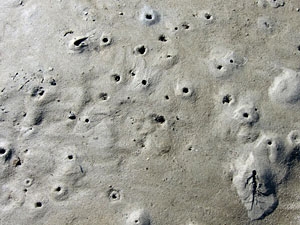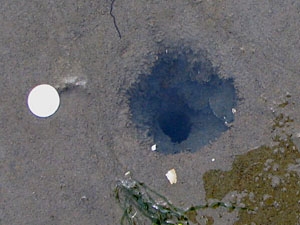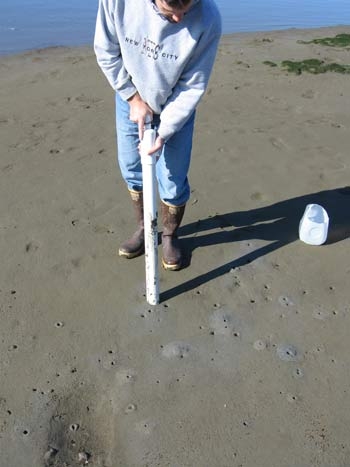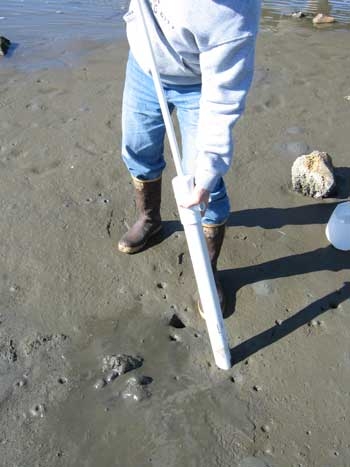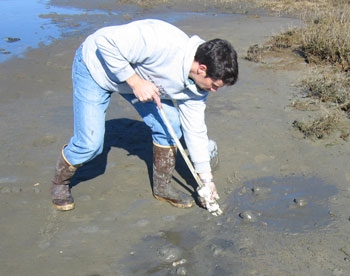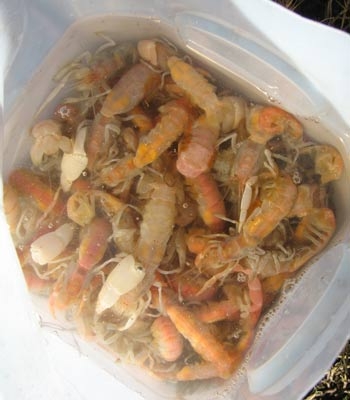
How to harvest bait shrimp
Mud and ghost shrimp are popular baits for salmon, sturgeon and other marine fish. Learn how simple it is to harvest your own.
Two species of shrimp are harvested in Oregon estuaries: ghost shrimp and mud shrimp. These are commonly referred to as bait shrimp and are used as bait for salmon, sturgeon, and many other marine species. Mud shrimp, which build singular burrows, are somewhat harder to come by than the more abundant ghost shrimp. Both are very soft bodied and generally not, if ever, consumed by humans. There are many other species of shrimp in Oregon's estuaries, but all are much too small to be considered worthwhile for harvest.
What you need
- An ODFW recreational shellfish license is required for anyone 12 years old or older to harvest.
- A bait shrimp pump.
- A container for your harvest.
- Rubber boots, hip or chest waders.
Note: A permit is required to harvest mud and ghost shrimp by mechanical methods (contact ODFW Newport office).
When to go
Low tide is the easiest time to harvest. Since ghost shrimp are common in the high intertidal, it doesn't take an exceptionally low tide to find them.
Where to go
Nearly all of Oregon's estuaries have bait shrimp. Typically, good areas for bay clamming can also be good for harvesting bait shrimp. They prefer the mud flats over sand bars so focus on those areas. Top estuaries for bait shrimp include, but are not limited to: Tillamook Bay, Netarts Bay, Nestucca Bay, Siletz Bay, Yaquina Bay, Alsea Bay, Siuslaw Bay, Coos Bay and Coquille Bay.
Things to know
There is no limit on the number of bait shrimp you can harvest. Shelf life of bait shrimp is very short as they are fragile and die quickly; even keeping them in a refrigerator will only keep them alive for a few days. It is advised to only take the amount you will use in the short term so as not to waste harvested bait shrimp.
Identify shrimp burrows
Ghost shrimp make several burrows and are usually found in dense patches in high intertidal areas. If your feet start sinking faster than expected, you're in the right place.
Pumping bait shrimp: Step by step
Step one
Place the shrimp pump over a burrow.
Step two
Draw back the pump handle with the air hole covered by a finger.
Step three
Pull the pump out of the hole, move it to the side, remove finger covering air hole, and push pump hand back to its base.
Step four
Repeat pumping in same hole if necessary. Usually, one to three pumps to a hole are sufficient. If no shrimp are found, move to another hole as some holes no longer contain shrimp.
Step five
Collect shrimp

